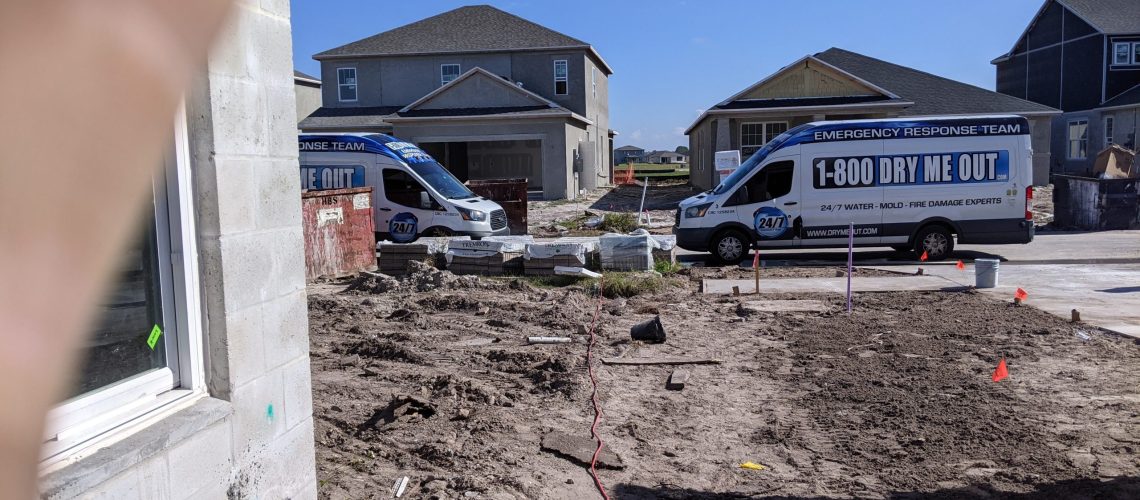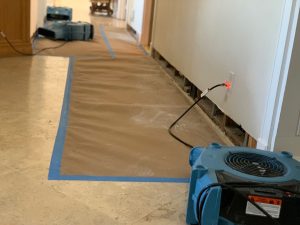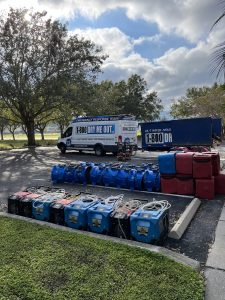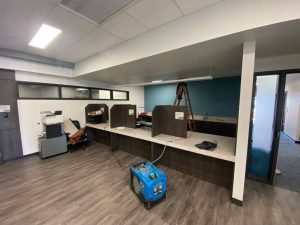When hurricane season rolls in, it’s not just the wind you need to worry about, it’s also the water. At Dry Me Out, we’ve seen firsthand what happens when homes and businesses aren’t properly prepared for hurricanes. Water damage from heavy rains, flooding, and storm surge can be devastating. But the good news? A lot of it is preventable with the right prep work.
We’re here to share expert advice based on years of experience helping families and property owners recover after major storms. Whether you’re a first-time homeowner or a long-time resident of a hurricane-prone area, these tips can help protect your property, your safety, and your peace of mind.
Key Takeaways
- Prepare early. Don’t wait until a storm is approaching to start your hurricane prep.
- Understand your risk. Know if you’re in a flood zone and check your insurance coverage.
- Keep your property maintained. Clear gutters, inspect the roof, and seal cracks before the storm.
- Have a plan. Know how to evacuate, where to go, and how to stay in touch.
- Stock supplies. Enough food, water, and emergency items for at least 3 days.
- Stay safe after the storm. Watch for hidden water damage and call professionals if needed.
- Dry Me Out is here for you. We offer reliable, fast, and experienced water damage restoration you can count on.
Why Preparing Before a Hurricane Matters
It’s easy to think, “It won’t happen to me.” But the truth is, hurricanes are unpredictable. One small shift in a storm’s path can mean the difference between a close call and a direct hit.
Preparing in advance gives you options. When you’ve already sealed leaks, stocked emergency supplies, and planned your evacuation route, you don’t have to scramble at the last minute. You’re ready, and that makes a huge difference when minutes matter.
Understand Your Flood Risk
The first step in prepping for hurricane season is understanding how likely it is that your home or business will flood. Here’s what you can do:
- Check FEMA flood maps to see if you’re in a high-risk flood zone.
- Review your homeowners or renters insurance. Most policies don’t cover flood damage unless you’ve purchased a separate flood insurance policy.
- Consider flood insurance even if you’re in a low-risk area. Flooding can happen anywhere, especially during hurricanes.
Knowing your flood risk helps you make smarter decisions about what level of protection your property needs.
Inspect and Maintain Your Property
We can’t stress this enough—routine maintenance is one of the best ways to prevent water damage during a storm.
Here’s a basic property prep checklist:
Roof:
- Look for missing, broken, or curling shingles.
- Clear out leaves and debris from gutters and downspouts so water can flow freely.
- Consider hurricane straps or clips if your roof isn’t properly secured.
Windows and Doors:
- Seal any cracks or gaps with weatherproof caulking.
- Install storm shutters or have plywood cut and ready to secure windows.
- Replace old or damaged weather stripping.
Basement and Crawlspaces:
- Install a sump pump and check that it works before storms hit.
- Use vapor barriers and seal vents to prevent water intrusion.
- Elevate utilities like water heaters and electrical panels.
Small repairs now can save you thousands in water damage restoration later.
Hurricane-Proof Your Yard
Your yard can become a major hazard zone during high winds and heavy rains. Here’s how to prep your outdoor space:
- Trim trees and remove dead branches to avoid them falling on your roof or windows.
- Secure outdoor furniture, grills, and decorations, or move them indoors.
- Clear out storm drains and gutters near your property to prevent overflow and pooling.
If water can’t drain properly, it will find a way into your home. Keeping your property clear and clean makes a big difference.
Emergency Supplies You Should Have on Hand
Don’t wait until the storm is on your doorstep to gather supplies. Aim to have enough to last you at least 3 days without power or running water.
Here’s a quick supply list:
- Bottled water (1 gallon per person per day)
- Non-perishable food and manual can opener
- Flashlights, lanterns, and extra batteries
- First aid kit and essential medications
- Portable phone chargers or power banks
- Battery-powered weather radio
- Personal hygiene products
- Copies of important documents in a waterproof folder
- Cash in small bills
If you have pets, make sure to stock food, water, and any medications they need as well.
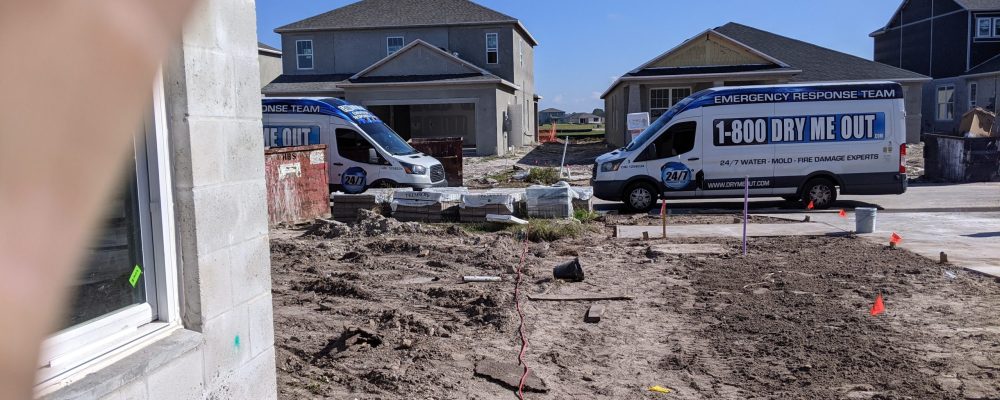
Know How to Turn Off Your Utilities
If there’s a risk of flooding or structural damage, you may need to shut off your utilities to stay safe. Make sure everyone in your home knows how to:
- Turn off electricity at the main breaker.
- Shut off gas using the main valve.
- Stop water supply at the main line.
Pro tip from our restoration team: Label your shutoff valves in advance so there’s no confusion during an emergency.
Protect Important Belongings
If you live in a flood-prone area, don’t leave valuables on the floor or in low areas of your home.
- Elevate electronics, furniture, and important belongings.
- Store documents and photos in waterproof containers or digital formats.
- Use plastic bins instead of cardboard boxes in storage areas.
You’ll thank yourself later when you don’t have to deal with the loss of irreplaceable items, or spend the time and money replacing things you already have.
Create a Family Emergency Plan
Every household should have a clear plan for what to do if a hurricane is on the way. That includes:
- Knowing your evacuation zone and route
- Choosing a meeting place in case your family gets separated
- Keeping a contact list of family, friends, and emergency services
- Making a plan for pets
Practice your plan at least once a year so everyone is familiar with what to do.
Stay Informed
Sign up for local emergency alerts and pay attention to the National Weather Service updates. Here’s how to stay informed:
- Download a reliable weather app
- Enable emergency alerts on your smartphone
- Follow local news stations on social media
- Keep a battery-powered radio in your emergency kit
Being in the know means you can make safer, faster decisions when a storm is coming.
What to Do After the Storm
Once the storm has passed, it might be tempting to breathe a sigh of relief and assume the worst is over. But water damage can still show up hours or even days later.
After a hurricane:
- Check your home for visible damage.
- Look for roof leaks, broken windows, or signs of flooding.
- Document everything.
- Take photos and videos before you clean up. This is crucial for insurance claims.
- Be cautious of hidden damage.
- Water can seep into walls, ceilings, and floors without being obvious.
- Call a professional restoration company.
- If there’s standing water or significant damage, call our team at Dry Me Out. We’re equipped to handle everything from water removal and drying to mold prevention and repairs.
We’re available 24/7 for emergency response because when water damage happens, time is everything.
Why Choose Dry Me Out?
At Dry Me Out, we’re more than just a water damage restoration company. We’re your partners in prevention and recovery. Our team has years of experience helping homeowners and businesses in hurricane-prone areas stay safe and bounce back fast.
From emergency water removal to full property restoration, we do it all. and we do it right! We work with your insurance company, handle the tough stuff, and get you back to normal quickly and safely.
When hurricanes hit, you don’t have to go through it alone. We’re here to help before, during, and after the storm.
Ready to storm-proof your property? Give Dry Me Out a call and let’s make sure you’re prepared before hurricane season hits. It’s better to be ready and not need it than to need it and not be ready. Stay safe, stay dry—and remember, we’ve got your back.
Whether you’re facing water damage from the Florida weather or a household mishap, we are ready to help! Call us now.

